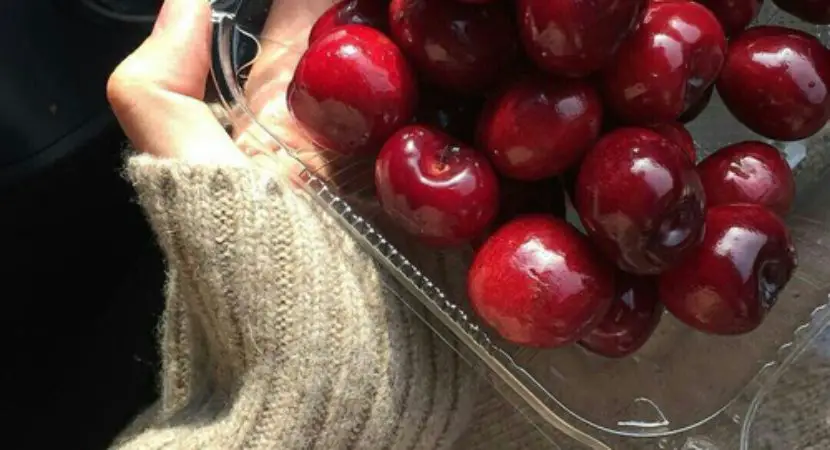They say to eat two cups of fruit a day, which sounds great. But then, the American Heart Association comes in and says that women should limit themselves to 29 grams of sugar intake. And what does the one have to do with the other? Sugar!
The natural sugar in fruit is unquestionably better than the stuff you find in candy. Still, when you think you’re doing a good thing eating all those grapes, you discover that with your daily quota of fruit you find you’ve eaten twice your allowance of sugar!
Whether to stay fit, get fit or take care of a health-related dietary need, you might need to curb your sugar intake. Here’s a breakdown of the fruits with the most sugar:
Lychees
Lychees roll in with a whopping 29 grams of sugar per cup. However, if you’ve eaten a fresh lychee recently, you know that there’s VERY little pulp to each fruit. So, for a snack, eat them fresh and you probably won’t get to half a cup. Avoid the canned lychees, and you’ll be fine!
Figs
Figs have 27 grams of sugar per cup when you eat them fresh, though most of us eat them dried. But the good news is that there’s no added sugar in dried figs, they’re just naturally that sweet!
Mango
Mango has 24 grams of sugar per cup, which is where you’d think things start to look a little more reasonable…but not if we’re talking about mango juices or smoothies. Beware of using mango in something where you mash it up, because you’ll end up consuming three whole mangos without realizing it.
Cherries
Although cherries come with a threatening 18 grams of sugar per cup, they’re like lychees in that they’re fabulous to snack on. A single cherry can keep you busy for a solid three or four seconds, as opposed to the cups of sliced mango that you can eat without a second thought!
Grapes
Yes, we love them. And once you turn them into wine…then we’re really talking. But with 15 grams of sugar per cup, and with how easily you can pop the seedless sort, you might want to take it easy on grapes.
A word to the wise: be careful with smoothies, juices, and even mixed drinks. You can crush high-sugar fruits up so well that in a single glass you’ve had 80 grams of sugar without realizing it. And once you add alcohol…your sugar consumption will be through the roof.
Okay, so now you’ve started to re-think fruit choices for smoothies, fruit salads, and snacks. If you’re looking for the lower-sugar options, here are your best bets:
Avocado
Yes, it’s a fruit! And with only one gram of sugar per cup, you can still make smoothies with it and go green in your juicing routine. Do be careful, though, because avocado is loaded with calories and fat. And yes, it’s good fat, but there’s always “too much of a good thing.”
Cranberries
Cranberries are the best popper-fruit that you can snack on without a second thought. At only four calories per cup, you can eat just about as many as you can stand. Let’s be honest, though…most of us eat them dried. Be careful with dried cranberries, because a quarter cup packs 29 grams of sugar!
Raspberries
Raspberries are another snacky fruit that you can feel good about, with only five grams of sugar per cup. The seeds like to get stuck in your teeth, though, so bring floss!
Blackberries
Yes, we have lots of berries on our list! Blackberries are another great option, with seven grams of sugar per cup. Mix these with raspberries and cranberries to get your fruit salad on without feeling guilty at all!
Strawberries
Perhaps the best smoothie fruit there is, strawberries only have seven grams of sugar per cup. You can freeze them, juice them, smoothie them, and throw them onto just about any dessert. And it will never be the strawberries that make it “bad for you!”
MUST READ: Diet Soda: Are You Pouring On The Pounds
MUST READ: Lemon Juice Diet: The Bitter Taste of Otherwise Sweet Results
When we talk about sugar, we have to be careful to talk about what KIND of sugar. Yes, some fruits have a lot of sugar, which means a lot of carbs and potential fat storage if you don’t burn all of what you eat. However, the sugar in fruit is fructose, which is the easiest form of sugar for your body to break down. If you eat a candy bar and then a bag of strawberries, your body will know how to break down the sugar in the strawberries first.
Fruit is also the vessel for most of the major vitamins you need, not to mention loads of fiber and water. So, if you’re always constipated or really need a specific vitamin, eat the fruits to reflect it and don’t worry as much about the sugar. Besides, sugar can be burned. If you want to eat more fruit, just go for a walk and bring the mango with you!

